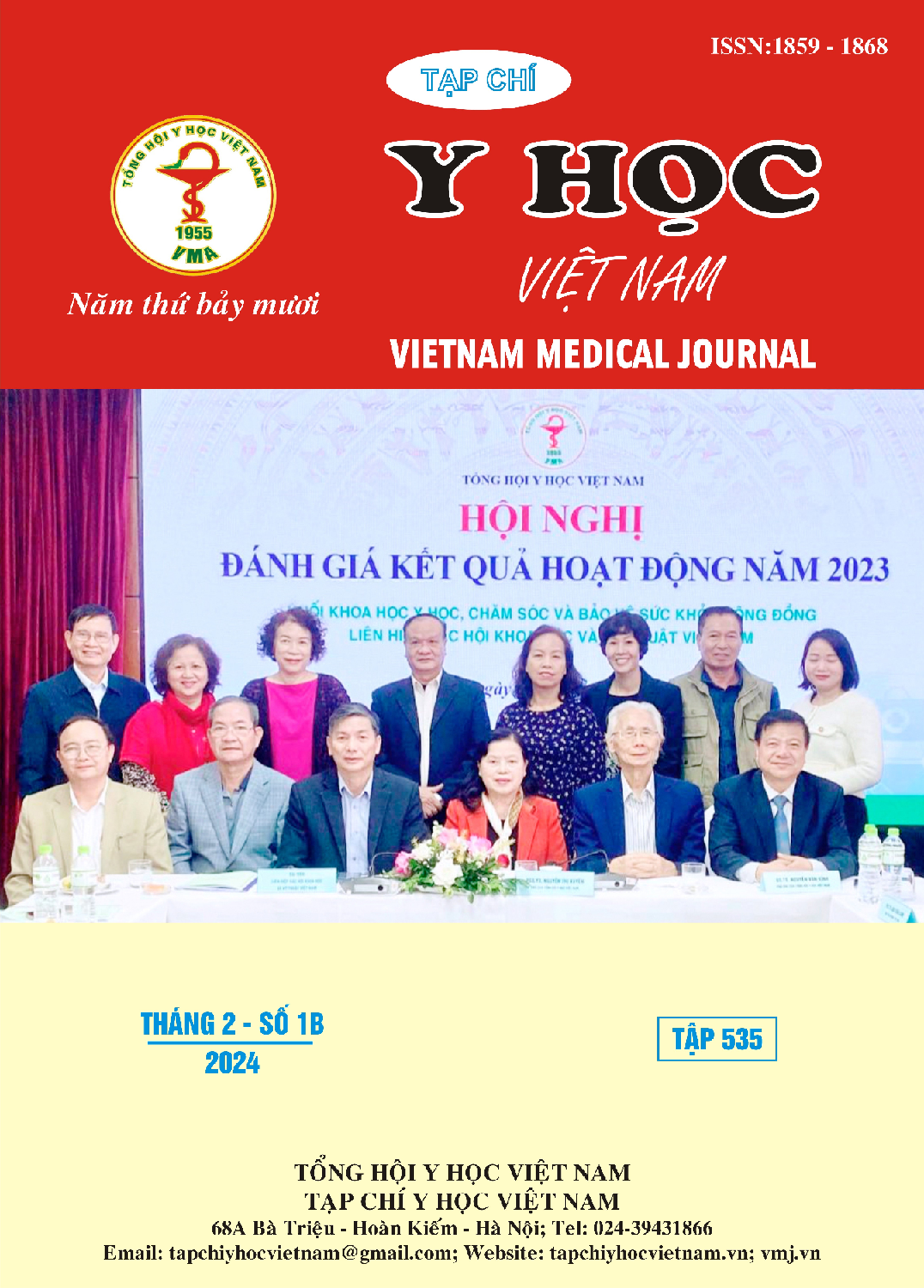THE RELATIONSHIP BETWEEN SALIVARY PEPSIN CONCENTRATION AND LOWER ESOPHAGEAL SPHINCTER IN PATIENT WITH GASTROESOPHAGEAL REFLUX SYMPTOMS
Main Article Content
Abstract
Aim: To describe pepsin in saliva by using Peptest and evaluate the relation between pepsin concentrations and lower esophageal sphincter (LES) in patients with gastroesophageal reflux symptoms. Method: A cross-sectional study was conducted in patients with gastroesophageal reflux symptoms at Institute of Gastroenterology and Hepatology from 06/2020 to 03/2023. Pepsin in saliva was detected by Peptest while LES was detected by high – resolution manometry (HRM). Results: 141 patients with average age of 43,1 ± 11,7, male percentage was 42,6%. Regurgitation was the most frequent symptom. The positive rate of Peptest was 89,9% in sample 1 (pepsin concentration was 79,1 ng/ml) and 81,8% in sample 2 (pepsin concentration was 62,6 ng/ml). There was no significant different in pepsin concentration between LES resting pressure baseline/swallow low/normal, IRP4s low/normal, EGJ-CI low/normal, EGJ morphology and IRP4s combined with esophageal motility low/normal (p < 0,05). There was a slight correlation between LES resting pressure when swallowing, IRP4s with pepsin concentrations. Conclusion: The rate of positive Peptest samples and pepsin concentration in saliva in patients with gastroesophageal reflux symptoms were high. There was a weak correlation between LES resting pressure when swallowing or IRP4s, but no correlation between the LES resting pressure baseline or EGJ – CI with the concentration of pepsin in saliva.
Article Details
Keywords
pepsin, Peptest, LES, gastroesophageal reflux disease.
References
2. Katz PO, Dunbar KB, Schnoll-Sussman FH, Greer KB, Yadlapati R, Spechler SJ. ACG Clinical Guideline for the Diagnosis and Management of Gastroesophageal Reflux Disease. Official journal of the American College of Gastroenterology | ACG. 2022;117(1):27. doi:10. 14309/ajg.0000000000001538
3. The Chicago Classification of Esophageal Motility Disorders, v3.0. Neurogastroenterol Motil. 2015;27(2): 160-174. doi: 10.1111/ nmo.12477
4. Nicodème F, Pipa‐Muniz M, Khanna K, Kahrilas PJ, Pandolfino JE. Quantifying esophagogastric junction contractility with a novel HRM topographic metric, the EGJ ‐Contractile Integral: normative values and preliminary evaluation in PPI non‐responders. Neurogastroenterology Motil. 2014;26(3):353-360. doi:10.1111/nmo.12267
5. Wang YJ, Lang XQ, Wu D, et al. Salivary Pepsin as an Intrinsic Marker for Diagnosis of Sub-types of Gastroesophageal Reflux Disease and Gastroesophageal Reflux Disease-related Disorders. J Neurogastroenterol Motil. 2020; 26(1):74-84. doi:10.5056/jnm19032
6. Bor S, Capanoglu D, Vardar R, Woodcock AD, Fisher J, Dettmar PW. Validation of PeptestTM in Patients with Gastro-Esophageal Reflux Disease and Laryngopharyngeal Reflux Undergoing Impedance Testing. Journal of Gastrointestinal and Liver Diseases. 2019;28(4): 383-387. doi:10.15403/jgld-335
7. Nguyen LT, Le TD, Hoang LB, et al. Threshold level of Peptest in diagnosing gastroesophageal reflux disease with extraesophageal symptoms: Evidence from Vietnam. JGH Open. 2023;7(12): 916-922. doi:10.1002/jgh3.13002
8. Guo Z, Wu Y, Li L, Chen J, Zhang S, Zhang C. The Role of Salivary Pepsin in the Diagnosis of Gastroesophageal Reflux Disease (GERD) Evaluated Using High-Resolution Manometry and 24-Hour Multichannel Intraluminal Impedance-pH Monitoring. Med Sci Monit. 2020;26:e927381-1-e927381-9. doi:10.12659/MSM.927381


